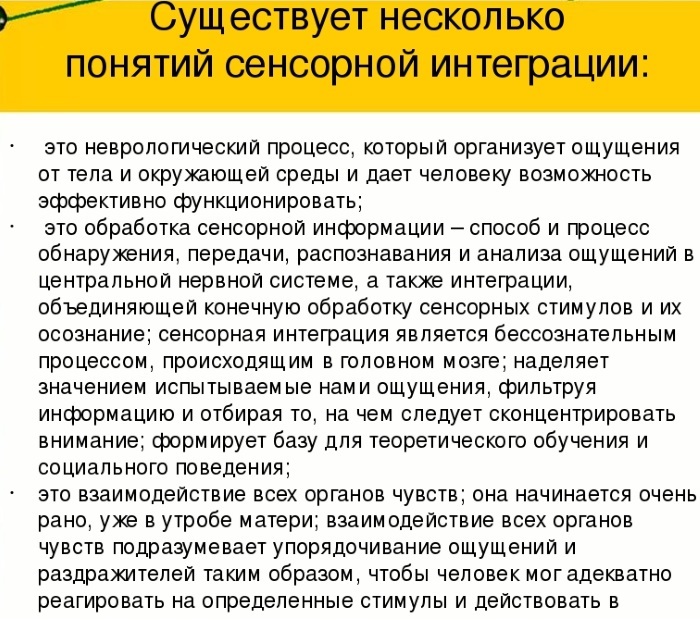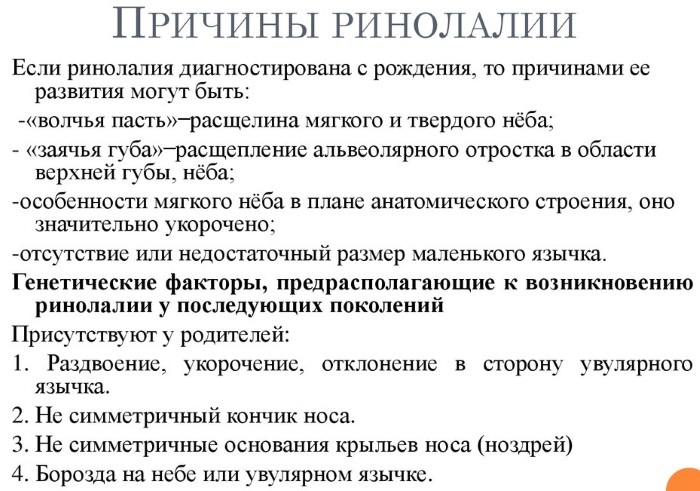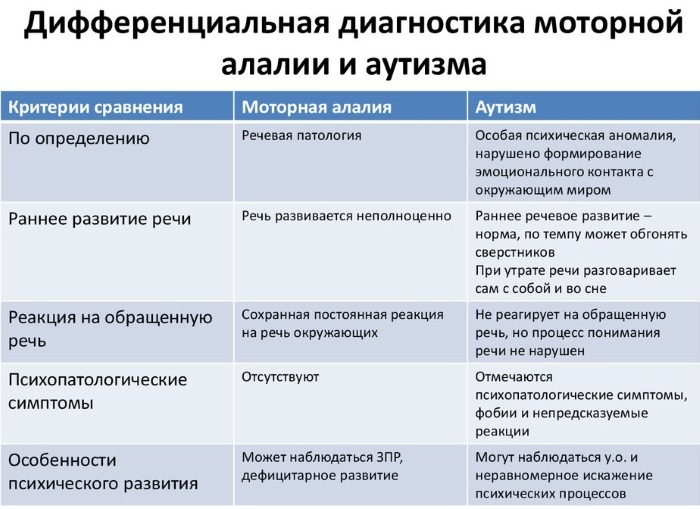Dyslexia is feature of intellectual development children of the younger age group, which is manifested by great difficulties in mastering writing and reading. The main cause of these disorders is associated with a number of neurological disorders that take its beginning under the influence of external and internal factors, or are the result of negative heredity.
Dyslexia is not classified as mental illness. Most children who find it difficult to write and read the simplest words have an absolutely balanced psyche, emotionally stable and do not show signs of mental illness.
In the process of diagnosing children with signs of dyslexia, it was found that patients in this category have concomitant problems associated with the perception and assimilation of information. At the same time, a child with symptoms of this disorder may differ in indicators of high intellectual development, is well versed in the exact sciences.
The first signs of dyslexia appear during the elementary school stage, when children begin to master writing, learn letters and try to read. A child with this disorder stands out strongly against the background of the general development of his peers.
Record content:
- 1 Symptoms and Signs
- 2 Causes
- 3 Diagnostics
-
4 Treatment methods
- 4.1 Modeling letters from plasticine
- 4.2 Strikethrough letters
- 4.3 Writing a word
- 5 Possible consequences and complications
- 6 Dyslexia Videos
Symptoms and Signs
Dyslexia is a neurological disorder that can be identified by its appearance. In simple words, these are dysfunctional disorders in the work of individual centers of the brain.
It is important to remember this fact for all parents and teachers who take part in the process of teaching and raising children with similar problems. The table below details the main symptoms of dyslexia, based on which the child is diagnosed.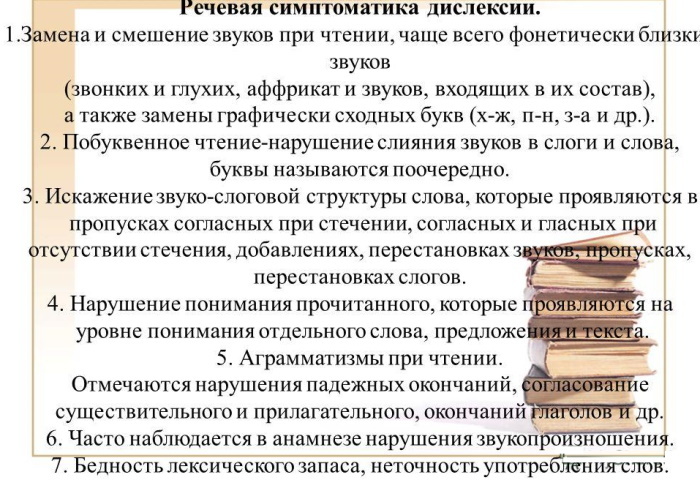
| Signs of dyslexia | Characteristics of the clinical manifestations of the disorder |
| Reading problems | Children suffering from dyslexia have a normal level of intellectual and speech development, but at the same time they master reading skills with great difficulty. In this direction of learning, a child may lag far behind his classmates. This symptom manifests itself especially clearly when it is necessary to read large passages, observe expressiveness and clarity of speech. Reading problems can persist for a long period of time, when, according to all the requirements of the school curriculum, the child must already fully master these skills. |
| Perception of information presented in the form of a letter | It is very difficult for dyslexic children to perceive information that is written on a blackboard, textbook pages, or directly in their notebook. A child who has this kind of disorder can read the presented data, but at the same time it is difficult to understand the semantic content of the written. Although during verbal communication, such children perceive information no worse than their peers. This criterion is taken into account during the differential diagnosis for the possible presence of concomitant mental diseases and mental retardation. |
| Coordination of movements | A child with dyslexia is very clumsy. Children with this disorder are deprived of the ability to carry out rapid planning of movements of the upper and lower extremities. Difficulties in synchronizing all elements of the musculoskeletal system are associated with the presence of neurological disorders that affect several centers of the brain at once. When trying to make a sudden movement, the child may stumble, hit the edge of the desk, or release the book. A distinctive feature of this symptom is that children with dyslexia do not have the accompanying signs of cerebral palsy. The manifestation of the current disorder is limited by clumsiness. |
| Development of intellectual abilities | Children with dyslexia have fully preserved intelligence, are interested in the world around them, and lead an active lifestyle. At the same time, there is a sharp decrease in the functional activity of the centers of the brain responsible for mastering spelling, writing and reading. |
| Insufficient level of self-organization | A child suffering from dyslexia is very poorly oriented in the world around him. In some cases, there is complete disorganization associated with the learning process. Children with this disorder may not recognize words they read a few seconds ago. understand what they have read, or immediately forget the information contained in the book, their own tetrad. There are serious difficulties with the level of organization, which relate to self-preparation for the learning process. The child is not interested in studying homework, reading literature, which must be done after school hours. |
| Hyperactivity | The presence of hyperactivity, as well as increased attention syndrome, is another characteristic sign of dyslexia. Children with these neurological disorders require a special approach from the teaching staff and parents. |
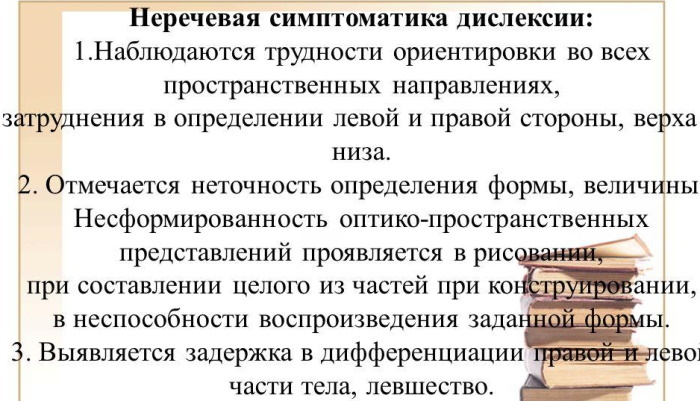
Dyslexia is (it is difficult to characterize this neurobiological feature of the brain in simple words) a manifestation of a complex of disorders associated with problems of learning to write and read. Timely detection of this disorder is possible through continuous observation of the child's behavior, his attempts to study literature, as well as mastering writing.
In this case, dyslexia is also accompanied by the following symptoms:
- while reading, children often rub their eyes, try to take them aside, or are constantly distracted by various environmental stimuli;
- the child holds the textbook too close to his eyes, covers it, squints his eyes (while there are no ophthalmic diseases);
- children with dyslexia are characterized by increased fatigue, which occurs especially quickly after starting reading, as well as mastering writing;
- the child uses any excuse to avoid completing the teacher's assignments as part of homework, avoids reading literature that must be mastered on his own;
- dyslexic children can study the textbook with their head turned slightly to the side, as if one eye is not participating in the reading process;
- when a child reads, he begins to skip individual phrases, and sometimes does not even notice whole fragments of the text (the manifestation of this symptom of dyslexia is not a deliberate act of avoiding learning, but is considered a feature of the neurological disorders);
- while reading, or immediately after the completion of this process, children may complain of attacks of severe headaches, which gradually go away with the rest of the eyes and the centers of the brain, which were in stress;
- in combination with the problems of teaching writing and reading, the child has difficulties in memorization and self-identification of geometric shapes that are easily recognizable (circle, square, rectangle);
- immediately after mastering writing, being at the stage of early psycho-emotional development, begins to write words backwards, not realizing that these actions are wrong;
- the level of technique and speed of reading do not correspond to the age and mental development of the child.
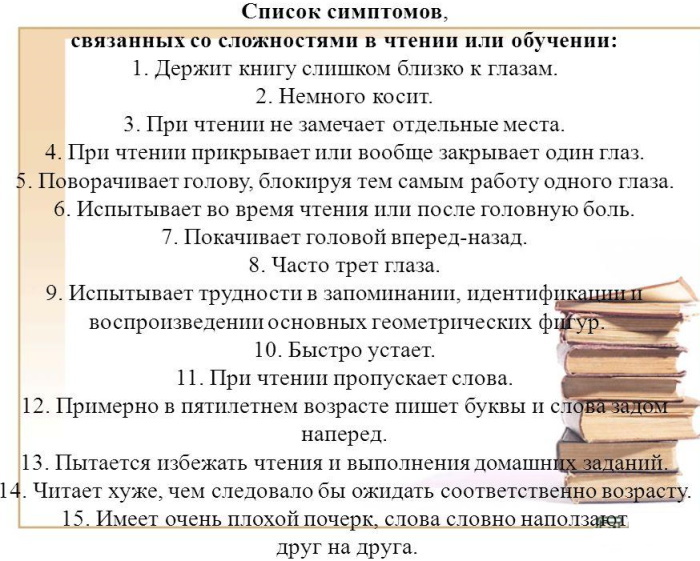 Children with dyslexia who have mastered writing have very poor handwriting. Having looked at the notebook of such a child, you can find that all the words and letters are located at different heights, crawling over each other. A dyslexic child almost always has very poor handwriting that cannot be corrected.
Children with dyslexia who have mastered writing have very poor handwriting. Having looked at the notebook of such a child, you can find that all the words and letters are located at different heights, crawling over each other. A dyslexic child almost always has very poor handwriting that cannot be corrected.
Many children cannot even understand what their parents or teacher are asking of them. It is very important that the above signs of a neurological disorder are diagnosed in the early stages of their manifestation.
Causes
Dyslexia is (in simple words, this disorder creates the impression that the child is very neglected) an individual feature of the development of the centers of the brain of children who belong to the younger age group.
Numerous scientific studies using MRI and neuroimaging methods have shown that factors of a neurobiological nature are at the heart of children's learning disabilities in writing and reading.
Certain centers of the brain of such children are less functional. Moreover, they work without signs of pathological disorders. A pronounced decrease in performance affects the posterior segment of the left middle gyrus, which is located in the temporal region of the brain.
The structure of brain tissues, which are characterized by lower functional activity, also have a significantly lower density. These factors negatively affect the child's ability to master reading and writing.
At the same time, dysfunctional disorders of this part of the central nervous system can persist in adults, who suffered from dyslexia in childhood, but they did not receive quality assistance from teachers and doctors.
Due to the fact that the main reason for the development of dyslexia is associated with the peculiarities of the development of the brain, most scientists and medical practitioners are inclined to believe that this disorder is hereditary from parents to children.
In 1917 g. Englishman J. Hinshelwood has conducted research on the learning disabilities of children with signs of dyslexia. The result of his scientific activity is the discovery of repeated facts of the birth of children suffering from dyslexia, who have close relatives with similar developmental problems.
The first fundamental research in this direction was carried out in 1950 by Dr. B. Hallgren. According to the results of a scientific experiment, the fact of the transmission of a tendency to dyslexia along with genetic information was confirmed. In 55% of cases, the cause of this neurological disorder is negative heredity.
In the process of carrying out molecular genetic diagnostics of biological material of persons with signs dyslexia, it was possible to isolate a gene responsible for the development of neurobiological disorders in the structure of the brain. Currently, scientists are aware of the presence of 4 mutated genes that are associated with dyslexia.
Violation of the process of transmission of genetic information leads to the pathology of neuronal migration in the structure of the cerebral cortex. More detailed studies have shown that the isolated DYX1C1 and DCDC2 genes are directly related to cilia. In this regard, genetic scientists do not exclude the fact that dyslexia can be attributed to the category of such hereditary diseases as ciliopathies.
Dyslexia is (in simple words, this learning disability affects the quality of life of a child) a decrease in the density of the cerebral cortex in the temporal bone. This neurological disorder can occur not only due to poor heredity, but also due to the negative impact of the following factors:
- violation of the physiological balance between the hemispheres of the brain;
- latent left-handedness;
- features of the functional activity of the central nervous system associated with the lack of the body's ability to use two cerebral hemispheres at once.
Dyslexia is a neurological disorder that must be diagnosed as early as possible. Therefore, parents of a child who have signs of this developmental disorder of the brain should seek help from a specialist. At the same time, it does not matter what effect of the cause led to such a problem.
Diagnostics
Dyslexia is (in simple words, this feature of a child's mental development can be detected by a psychotherapist) the result of too slow work of the centers of the brain. Diagnosis of this disorder is performed by a specialist in corrective development for children with signs of dyslexic disorders.
It can also be a child psychologist with extensive practical experience in working with patients in this category. It all depends on the clinical symptoms. The examination process includes a mandatory ophthalmological examination in order to exclude the factor of an eye disease. In the absence of these pathologies, the child undergoes special testing.
The dyslexia therapist attends the patient's class. In close cooperation with the teacher, the doctor evaluates the child's reading speed and technique. The doctor sits down at a separate table so that his presence does not embarrass other children. The lesson takes place in a completely familiar environment.
Based on the observation results, the specialist draws appropriate conclusions. During the testing phase, the teacher may ask the child to write a specific word or several words on the board. sentences, or else retell in his own words what was written in a passage that he read several minutes ago.
The next step in examining a patient with signs of dyslexia is to assess his psycho-emotional and mental development. The specialist in the treatment of this disorder draws up a diagnostic report, which displays objective information onthe following questions:
- Does the child retain intelligence, or are there clear signs of mental retardation?
- Have you found unsatisfactory reading and writing skills?
- Is there an understanding of the information read?
- When a child reads, do gross errors occur, or does he guess individual words, think out phrases?
- Do the difficulties of retelling relate only to the read text or the patient is not able to narrate any other information from life?
- Does the child have problems writing simple words that he needs to know due to the school curriculum, as well as his age?
- In the text, which is subject to diagnostic study, a large number of errors are found, admitted during copying from a blackboard or textbook, or most of the grammar rules are followed, spelling?
- Does the patient have signs of increased emotionality?
- Does the child have good handwriting or does he write so that he can barely make out the letters and words?
- Homework is completed on time or are there serious problems with the independent organization of this process?
- Does the child have an increased sensitivity of the nervous system or not?
- During the observation of the patient, were there any manifestations of his excessive irritability and impulsiveness in response to the teacher's requests or in the process of communicating with peers?
- Does the child have well synchronized all movements of the musculoskeletal system, or are there signs of clumsiness?
Patients of the adult age group who suffer from dyslexia are distinguished by a heightened sense of justice and a pronounced aesthetic taste.
During the diagnosis of this neurological disorder, special attention is paid to the motility of the upper limbs. Dyslexic patients have a special grip on a pen or pencil. For example, by holding these stationery with much more or fewer fingers.
Treatment methods
Dyslexia therapy is considered most effective if it is given before the child reaches 10 years of age. 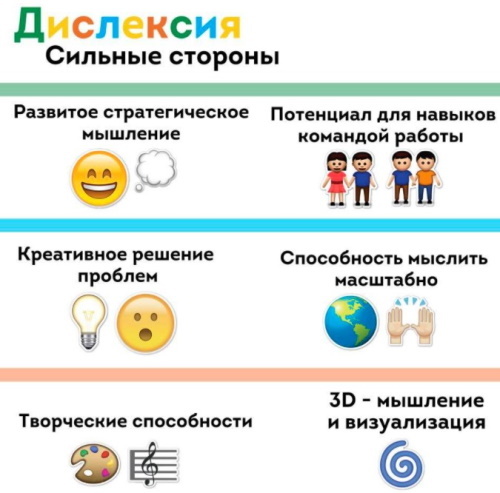 The principle of treatment of this neurological disorder is the organization of developmental games, exercises, in which children and a specialist in the correction of dyslexic disorders take part.
The principle of treatment of this neurological disorder is the organization of developmental games, exercises, in which children and a specialist in the correction of dyslexic disorders take part.
Modeling letters from plasticine
To carry out this game exercise, you will need plasticine and a sculpting board. The teacher shows the child a certain letter or word, and then asks to mold them from plasticine.
At the same time, to improve the development of visual memory, it is ostentatious to perform sculpting using different colors. It is believed that this method allows the child to expand his vocabulary, memorize more letters, which has a positive effect on the process of mastering reading.
Strikethrough letters
This exercise to combat the manifestations of dyslexia is carried out in accordance with the following algorithm of actions:
- The dyslexic correction specialist shows the patient a letter.
- After that, the child must find the corresponding letter in the pre-compiled list, and then cross it out.
- Then the specialist proceeds to study the next letter.
This playful exercise allows the child to memorize the alphabet, the knowledge of which is necessary for quick and correct reading of words. This lesson can be done as part of a group therapy.
Writing a word
The exercise of writing a word makes it possible to develop the centers of the child's brain responsible for reading and writing.
The organization of this method of therapy is as follows:
- The dyslexic corrector is at the board.
- The child sits at a desk with an open notebook. He should have a pen or pencil in his hands.
- The specialist writes a word on the board, leaving 1 letter unfinished.
- The child is required to write a similar word in his own notebook, adding the missing letter.
Also, children can go to the blackboard and finish a word without writing it down in a notebook. The child development specialist independently determines the order of the lesson.
Possible consequences and complications
Dyslexia is a neurobiological disorder of origin, which must be corrected in a timely manner.
Otherwise, the following consequences await a person:
- persisting reading problems;
- poor and illegible handwriting, as well as significant problems with writing words containing a large number of letters;
- inability to understand the meaning of the read text;
- decreased self-esteem;
- the development of an inferiority complex;
- the occurrence of accompanying psychological problems;
- the inability to get a high-quality professional education;
- the doom to perform simple physical labor, where reading and writing skills are not required.
Dyslexia is a neurological disorder, the first signs of which are found in children in the younger age group.
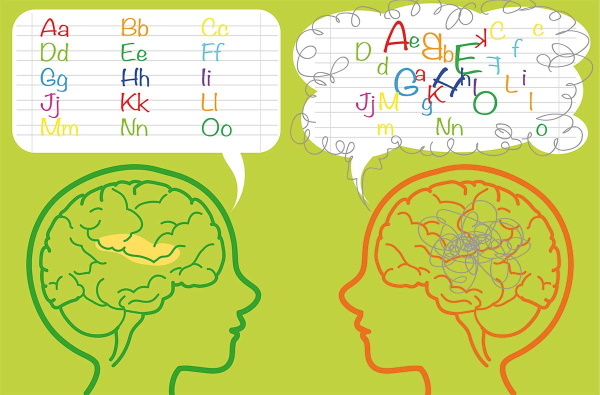
The symptomatology of this dysfunction of the brain is expressed in the emergence of significant problems with the development of reading and writing even the simplest words. A child suffering from dyslexia does not remember words, reads slowly and illegibly, and guesses certain fragments of the text.
At the same moment, the centers of the brain are not able to memorize information that has been read for 1-2 minutes. back. Dyslexia is not a mental illness, but in the absence of qualified treatment, its consequences remain with the person for the rest of his life.
Dyslexia Videos
Dyslexia symptoms in adults:

